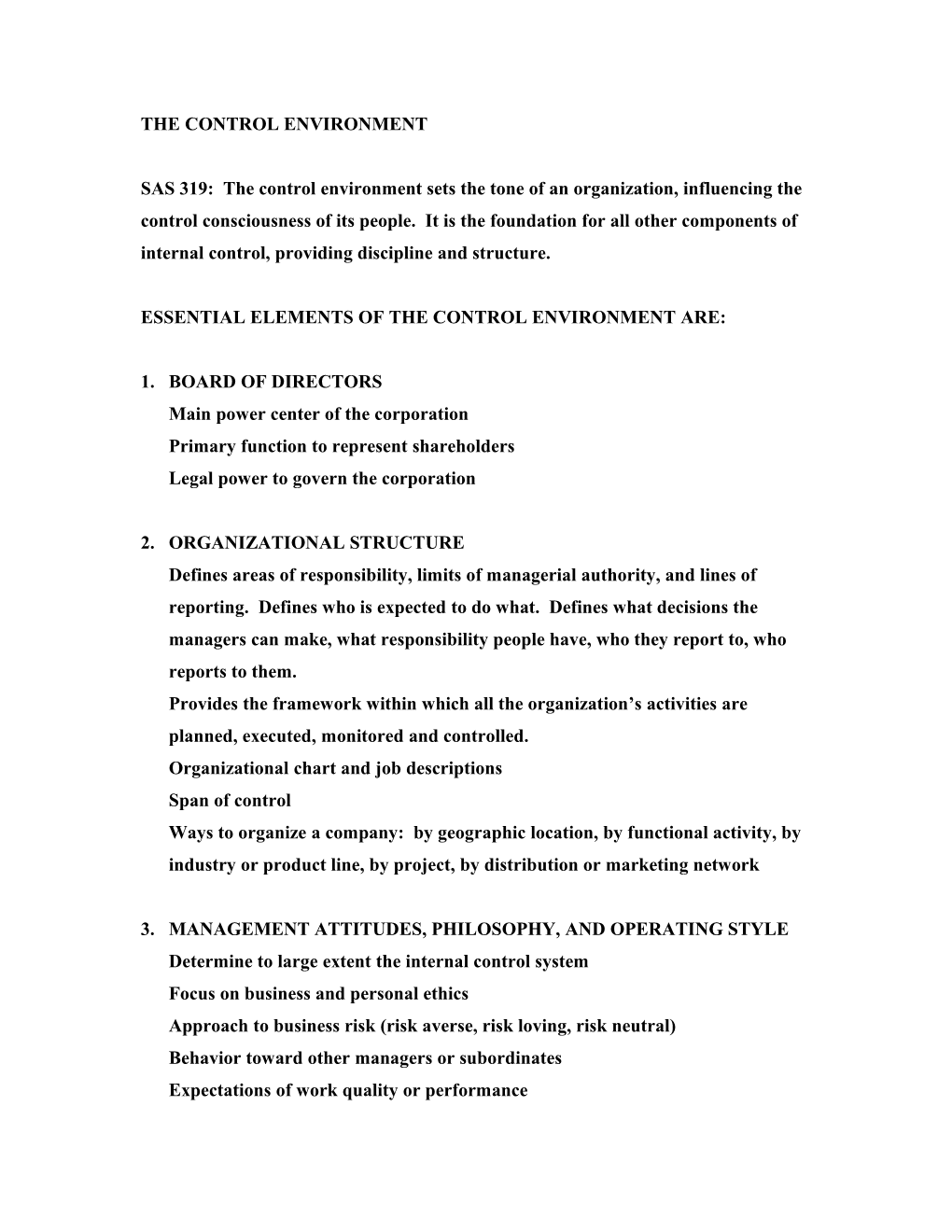THE CONTROL ENVIRONMENT
SAS 319: The control environment sets the tone of an organization, influencing the control consciousness of its people. It is the foundation for all other components of internal control, providing discipline and structure.
ESSENTIAL ELEMENTS OF THE CONTROL ENVIRONMENT ARE:
- BOARD OF DIRECTORS
Main power center of the corporation
Primary function to represent shareholders
Legal power to govern the corporation
- ORGANIZATIONAL STRUCTURE
Defines areas of responsibility, limits of managerial authority, and lines of reporting. Defines who is expected to do what. Defines what decisions the managers can make, what responsibility people have, who they report to, who reports to them.
Provides the framework within which all the organization’s activities are planned, executed, monitored and controlled.
Organizational chart and job descriptions
Span of control
Ways to organize a company: by geographic location, by functional activity, by industry or product line, by project, by distribution or marketing network
- MANAGEMENT ATTITUDES, PHILOSOPHY, AND OPERATING STYLE
Determine to large extent the internal control system
Focus on business and personal ethics
Approach to business risk (risk averse, risk loving, risk neutral)
Behavior toward other managers or subordinates
Expectations of work quality or performance
Attitude toward accounting functions—accounting principle choices
Concern for internal control
- MANAGEMENT CONTROL MECHANISMS
Use of budgets and standards
Formal written statement of management’s goals and objectives expressed in dollars and cents.
Provides set of targets for the entire organization, prepared for 12 month periods.
Responsibility accounting: balance between management authority and responsibility.
Controllable revenues, expenses, assets
Weakness of short term financial control targets vs long term
- PERSONNEL POLICIES AND PRACTICES
Building a reliable work force
Policies should address and document: hiring practices, training, evaluation (fair, periodic, copies of written evaluations to employees), promotion policy (hire from outside or from within)
Compensation and recognition practices
Necessary resources provided to employees
Corporate code of conduct: behavior toward customers, vendors, other employees, nepotism (marriage to another employee), political contributions, outside activities of employees, confidentiality, personal appearance, conduct in the workplace, controlled substance abuse, safety regulations
- AUDIT COMMITTEE
The audit function is made up of three components: the audit committee, the internal auditor, the external auditor.
The audit committee is responsible for:
Making recommendations to the board regarding selection of external auditor.
Reviewing significant financial information
Seeing that effective internal control structure is maintained (Foreign Corrupt Practices Act 1977, SOX 2002)
Conducting investigations concerning potential fraud or irregularities of management.
Communications link between internal, external auditors, and the board.
- INTERNAL AUDIT
